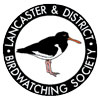Home › Forums › Bird & Insect Sightings › LDBWS Feeding Station and Garden Records Request
-
AuthorPosts
-
A minimum of seven Reed Buntings eating the LDBWS nosh yesterday and today. They tend to gather along the fence line next to the silver birches.
I’m out of the area during daylight hours tomorrow, so I won’t be able to do my daily check of what’s using the table (and where we scatter seed on the ground a few metres to the ‘left’ of the table).
If anyone’s passing by that way tomorrow could you have a look for me and report back?
There have been fewer birds using the station since the thaw– tomorrow’s cool conditions might see greater activity.
Also– while so many of us are stuck at home a request for more garden sightings. Any Bramblings, Blackcaps, Tree Sparrows, Greenfinches? Send them in!
BTO GBW info for our Silverdale garden.
2020 we recorded 51 weeks.
Greenfinch were recorded in 50 weeks, numbers from 1 – 10.
Tree sparrows were recorded in 42 weeks, numbers from 1 – 6.
2021 has started with the same numbers of each species in each of the first 3 weeks, namely 3 greenfinch, and 4 tree sparrow.male Blackcap 6th consecutive day, feeding on both fat-ball and sunflower hearts.
2 male Bullfinch and one female today and most days.
Greenfinch now regular but only a couple of birds together, some recovery from trichomonosis apparent.
Treesparrow seen today and reasonably regular but these are first in 16 years in my garden.
Blue Tits, LT Tits and Coal Tits regular but the latter nothing like the quantity there was prior to Xmas
Nuthatch on feeder today15-1-21 11:50 – 12:05 LDBWS station:
4 Blackbirds
1 Robin
1 Blue Tit
12 Chaffinch
6 Reed BuntingsThanks Peta.
Like myself, others had commented on the scarcity of Goldcrests at garden feeders and the assumption they were 100% insectivorous but I have had one again today that was feeding voraciously on fat balls. Whilst the serious bird books/sites refer to them as solely eating insects and spiders there are forums where people say that fat is a good inducement to them in severe weather. So today I paid particular attention and managed some poor shots through the window and the general mirk outside and it was definitely eating the fat.
My regular Blackcap though has eaten lots of fat and a huge amount of seed….no wonder it’s fat!Attachments:
Sorry, had to reduce file size again for the site to accept photo. Was the new website supposed to take higher resolution photos?
Attachments:
-
AuthorPosts
- You must be logged in to reply to this topic.


